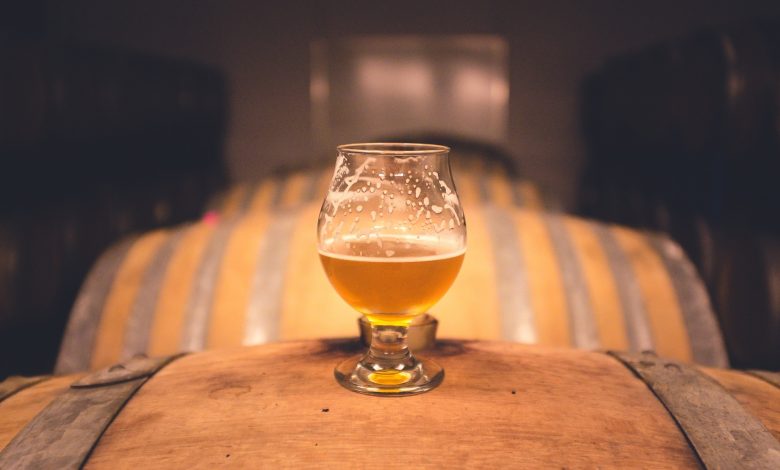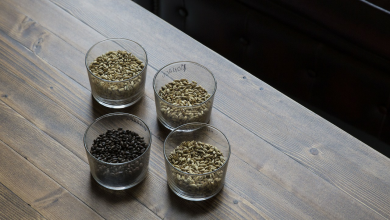Craft Beer in America: The History and Development

Beer continues to be the most popular and favorite adult beverage across America. While wine continues to be a close competitor, adults across the country choose the beer can over the wine bottle any given day. With over 7,000 breweries producing approximately 196 million barrels a year, the average American adult consumes about 26.2 gallons per year. The numbers are enough to reflect the popularity of the drink in the US.
While beer continues to be a favorite drink for Americans, the kind of beer they prefer is certainly different. Thanks to the thousands of microbreweries and craft breweries mushrooming across the nation, people now have gotten used to the taste of craft beer. This makes sense, as craft breweries focus mainly on brewing technique, quality, and flavor of the beer, and not so much on the quantity. Craft beer embodies rich flavors and a taste to savor, unlike the beer manufactured on a larger scale by bigger manufacturers.
The reason why craft beer even came into being in America and is still growing steadily is embedded in its rich history – one that involves amendments, Prohibition, bills-passed, acquisitions, and, last but not least, the Great Recession.
Early history of craft beer
The Prohibition played a major role in the history of craft beer in America. But what brought in the wave of craft beer into the country was the hope for a legacy, the need to differentiate, and a love for all things beer.
The history of beer goes back 7,000 years when it was first brewed in Mesopotamia, and the citizens worshipped the Ninkasi, the brewing goddess. Fast forward to the time when European immigrants settled in America started brewing their four ingredient beers. They were trying to bring to their new land the ales and lagers that they had once enjoyed in their homelands. What started with simple corn lagers slowly developed into much more tasteful and rich beers, much like the Europeans would have it. Soon, commercial breweries started mushrooming in New York, St. Louis, and Milwaukee. These beers embodied intense flavors that resulted from the use of quality hops and grains. Sales were good, and people were happy with their beer. However, things changed drastically once the Prohibition was enacted.
One of the most important moments in the history of beer was when the Prohibition era set in. The Eighteenth Amendment to the US Constitution was enacted into law on January 16, 1919. Thus began the era when manufacturing, selling, and transportation of alcoholic beverages was declared illegal. All legal breweries came to a screeching halt and soon took to producing non-alcoholic beverages to keep themselves afloat. These breweries started manufacturing malt-syrup, near beer, colas, and root beers.
The act also set in the three tier distribution system, which stated that manufacturers would need to sell their beverages through wholesalers who would then sell to retailers, unlike the earlier model where manufacturers would sell to the retailers directly.
To stay in compliance and brew non-alcoholic beverages and yet make sales, manufacturers slowly started replacing grains with rice and corn. The full-bodied German lager was soon replaced by “lites,” and the rich history of beer in America started living its worst nightmare.
It took 13 years and multiple acts to replete the Prohibition, ending with the Twenty-first Amendment. Once beer was legalized again, the journey to more flavorful beers started, a journey that was not really planned.

1965: Fritz Maytag and his legacy of craft beers
Fritz Maytag wanted to create something of his own and leave a legacy behind. Son of a Frederick Louis Maytag II, president of Maytag Company, and grandson of Frederick Louis Maytag I, founder of Maytag Corporation (which was eventually acquired by Whirlpool Corporation), Fritz Maytag’s need to make his mark was understandable. Given his illustrious family background, Fritz Maytag, a Stanford grad, was established and set to live a comfortable life even before he turned 30. However, destiny had decided to give Fritz what he wanted from life, and that too, was in the form of an investment opportunity.
In 1965, Maytag heard about his favorite brewery Anchor Brewing facing closure. He decided to buy in a controlling stake of 51 percent in the brewery so that he could advise them and help them get back on their feet. Soon, Maytag found creditors coming to him to liquidate their IOUs. To pay them off, Maytag needed to sell more beer, and rather quickly. The only way to create a stir in the market was to differentiate the quality of beer. This is where it all started.
In a market full of quantity-based, macro-beer, manufactured and sold by the beer giants, Maytag started launching beers in different styles and flavors. This was particularly new in America. Beers like Maytag’s Anchor Porter, Liberty Ale, and Christmas Ale were not present in the beer market yet. These beers will come to be known as the country’s very first modern IPA (India Pale Ale). However, the idea of flavorful and rich-bodied beer was so modern for the time that it took Maytag close to a decade to make any profit. But once the country had gotten the taste of these “out of this world” IPAs, there was no looking back.

1979: President Jimmy Carter legalized homebrewing
Just like any other success story, imitators soon started flooding the market, selling their own version of craft beers. But it would take some time to happen.
Imitators needed their own space to test their craft beer concoctions, and this seemed to be a difficult job since homebrewing was considered illegal back then. Any beer produced at home with an alcohol content of more than 0.5% was prohibited. This resulted in only 89 breweries throughout America by the year 1978.
Understanding the chicken-egg story that was taking place here, the Congress passed the H.R. 1337, a bill that repealed any restrictions and taxes towards homebrewing. The bill then came into effect when President Carter signed it into law.
As soon as the H.R. 1337 was passed, America saw its first Brewers Association and the American Home Brewers Association come into effect.
Among other notable firsts in the craft-beer history was the book The Complete Joy of Homebrewing, authored by Charlie Papazian. According to Papazian, about 90 percemt of America’s craft brewers started their brewing journey from their homes. This list included craft beer founders Jack McAuliffe (New Albion Brewing Company, Sonoma), Pete Slosberg (Pete’s Brewing Company), and Ken Grossman (Sierra Nevada Brewing Company).

1997: The microbrewery boom
As America started tasting and enjoying good craft beer, microbreweries started mushrooming all over the country. In the period between 1985-1997, the microbrewery scene saw a boom like never before. With a minimum of 20 percent growth per year and a phenomenal 100 percent growth in the year 1987, there was no stopping the microbrewery business.
People soon started seeing the potential, especially, because people already in the industry were minting money. The Boston Beer Company even went public on the New York Stock Exchange (NYSE) in the year 1995. This brought in a new wave of investors who wanted to invest in the microbrewing business. The industry was making money like it was child’s play.
Unfortunately, this became the wrench in the giant wheel. The idea of investors led many people to start their own microbreweries. These breweries produced cheap beer of poor quality, and needless to say, they weren’t anywhere close to what craft breweries were known to produce.
By 1997, America had close to 1,396 breweries. However, not all of them would survive. Many of these breweries started shutting down, and beer sales started dipping. Therefore, soon after craft beer saw its boom, it saw its bust.

The 1990s: The decade of the cool brews
The closure of the microbreweries brought the classic, old-styled craft breweries to an end. In its place rose what would come to be known as American beer. These beers too had a twist to them, one that no one would have ever imagined.
Wild and hoppy, the 90s craft beer packed in a punch. Craft brewers realized the best way to create the wildest flavors of all times was to incorporate offbeat ingredients, strong hoppy flavors, and tune up the alcohol content in them.
Of the various out-of-the-box ingredients used, some were fruits like apricots, while others contained earthy aromas of herbs and spices. Seafood lovers even had a choice of lobster incorporated beers.
Soon craft breweries with their odd names and even odder portfolio lit up the beer scene in America. There unique tastes and personality drew the beer geeks into the craft beer market. These beer lovers and collectors were now going to share with the world what American beer was really made of, and it was going to be fantastic.

2010 Onwards: Macros join the micro walk
The gradual move towards craft beer from the post Prohibition lite-lagers would lead to the ultimate foothold that craft breweries would ever need in the American beer market. From their 0.1 percent worth of total sales in 1987, they rose to gain 20 percent of the total sales of this hundred-billion-dollar market.
The industry biggies still churning out the lite lagers didn’t have much to differentiate themselves from the innovative craft breweries anymore. They were still focused on producing large quantities of predictable lager of good quality, but nothing that could match the flavorful craft breweries. The macros did give it a shot initially with craft beers like Blue Moon and the Red Wolf, but their quality just wouldn’t cut it. It was then they decided to buy into the sub-industry. This was followed by some incredible acquisitions that saw some mindboggling numbers.
It began with Anheuser-Busch buying a 25 percent stake in Redhook Ale Brewery and then buying Goose Island for a whopping $38.8 million. Anheuser-Busch InBev would go on to acquire many more such craft breweries to the tune of $221 million. Yet one of the biggest acquisitions in the industry was that of Ballast Point, which was bought at $1 billion by Constellation Brands in 2015. Recently, in 2019, Ballast Point was sold once again to Kings and Convict Brewing, a tiny, Illinois-based microbrewery. Within just four years, Ballast Point again returned to the microbrewery turf for the second time.

Effect of craft beer on the American economy
It was pretty clear from the acquisition stories that the beer biggies were out to get the smaller craft fishes. The macros were steadily bringing in several brands under their flag, and two of the biggest beer companies stood tall post-acquisition. They were MillerCoors and Anheuser-Busch InBev. Right from Blue Moon and Pilsner Urquell, to Boddingtons and Goose Island, they were all owned by either of these two giants.
Monopoly and duopoly are not unheard of. It is a basic technique to ensure market share by the bigger players in the market. MillerCoors and Anheuser-Busch InBev chose to be those players in the beer market by controlling about 90% of total beer production.
The only issue with monopolies and duopolies is that they defeat innovation and focus more on quantity with standard quality. It is also, unfortunately, known to hurt the employees in the industry.
True to the word of economists, the beer industry, too, saw this slump in employment. The years 2002 through 2007 saw workers lose employment in the beer industries. This happened in the phase when the country was seeing economic expansion. The thought of what would happen to the industry amidst the financial crisis was unthinkable. Yet, truly, the unthinkable happened. From 2008 through 2016, when the country was battling the economic crisis, the beer industry saw unprecedented growth. America saw breweries expanding to the tune of six times their original number. What was even more astounding was the number of workers employed in breweries jumped by 120 percent. All this happened at a time when the US saw a decline in beer consumption.
The last couple of years have been good for the beer industry, in general. Government data published in 2017 reflected a total of 70,000 employees. It also mentioned that the average beer price has gone up by 50 percent, which means Americans are willing to pay for quality beer.
The one thing that has changed during these years in the market dynamics. It seems the macros are being toppled over by the countless microbreweries that have popped across the country. The five major brewers – Heineken, MillerCoors, Anheuser-Busch, Diageo, and Pabst, saw a 14 percent decline in their shipments during the years 2007-2016.
The increase in employment in the industry is attributed to the decline in the costs of alcohol-producing equipment and also to the convenience of advertising using social media and reaching the local audience easily.
The paradoxical growth story of the craft beer industry is truly a mystery. While sales of all-time favorites shrink, beer lovers start experimenting with new flavors and essences. In this case, consolidation has not crushed innovation; it has, in a way, fueled it. Brewers have realized their consumers need to experiment with new tastes, and they are merely obliging them – even if this requires employing more workers to produce lesser numbers of beer barrels.
Currently, the West is leading the craft beer revolution in America. Portland, San Diego, Los Angeles, Denver, and Seattle are housing breweries whose beers are popular across the nation. Illinois in the Midwest and Idaho are states which saw the growth spurt in the beer industry during the decade spanning 2006-2016.
Looking closely at what industry experts and economists have to say, two main reasons caused the spurt in the craft beer movement. The first one is what the consumer wants. It became clear from the increasing demand for craft beer that beer drinkers were looking for richer and more flavorful, full-bodied beer. They were now looking for something above and beyond the regular lite or lager they have been drinking. Craft breweries gave them that. Just like Maytag had done four decades ago, microbreweries were doing the same today. They introduced hoppy IPAs, which clung to the taste buds of the beer-loving Americans, and they kept creating more varieties of it. This change in consumer preference when it comes to beer is one of the primary reasons for the beer boom in the slowing economy.
Another reason for the rise of craft beer production during the recession could be the lack of jobs in the market that forced professionals to turn into necessity entrepreneurs by opening microbreweries.

Whatever the reason for the growth of craft beer in America, it has brought in a welcome change. With a history dating back to the days of Prohibition, which to some extent, caused the spark that is now burning bright in the form of the craft beer industry in America, the US is a fine country for beer geeks to travel through in search of some of the finest beers embodying various types of hops and ingredients further from your wildest imagination. The craft beer industry in America is a craft in making, indeed.



